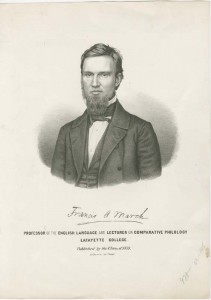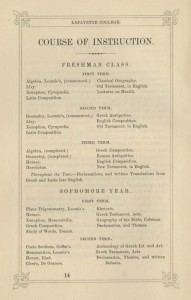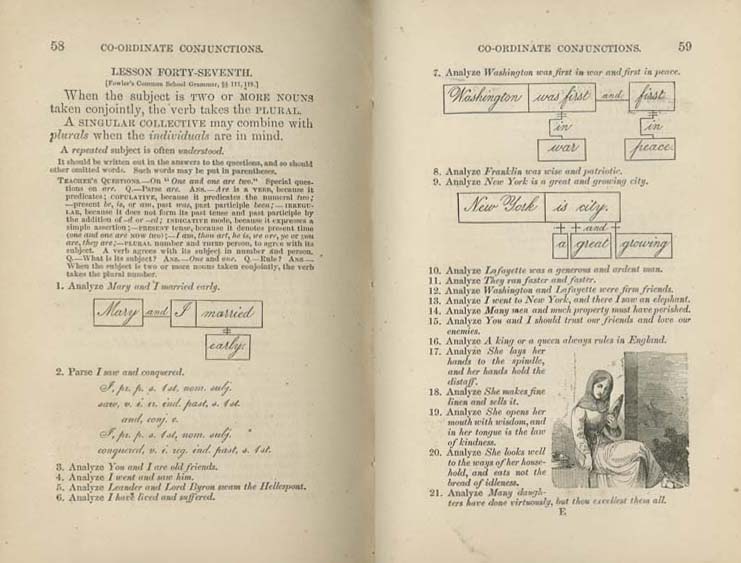Students Learning 1855-1880
 Professor Francis A. March (right), who arrived at Lafayette in 1855, was instrumental in creating English composition as a discipline at Lafayette, and is widely credited with introducing Shakespeare to the American college classroom. According to one of his former students:
Professor Francis A. March (right), who arrived at Lafayette in 1855, was instrumental in creating English composition as a discipline at Lafayette, and is widely credited with introducing Shakespeare to the American college classroom. According to one of his former students:
Professor March was a truly great teacher … His methods were simple – unrelentingly simple – but how they enabled him to pull at the unsuspected strings of one’s mental operations, to get at the very inmost recesses of one’s mind! … Many a student stood before him in bewilderment at the “cruel kindness” (the student’s favorite illustration of oxymoron) of this master-questioner of the dodging and evasive mind of youth.
In Professor March’s severely gentle manner there was also a touch of suppressed playfulness. His eyes will be remembered for a twinkle that betokened a delight in subtleties of thought, in the intricacies of a problem. Just as memorable was that look of human kindness that assured one of benevolent concern for every good thing pertaining to mind and character.
1913 Address by James W. Bright, Class of 1877
At left, the course of instruction for freshmen and sophomores in 1858-59. Freshmen took courses in English, Greek, and Latin composition. They were also expected to make “Declamations, and written Translations from Greek and Latin into English” throughout the year. “Declamation, Themes, and written Debates” continued in the sophomore year, along with rhetoric and, with Trench’s Study of Words, philology.
Through his book A Parser and Analyzer for Beginners, Professor March also taught English composition to a younger generation. The pages below show how the book used illustrations and sentence diagrams.




